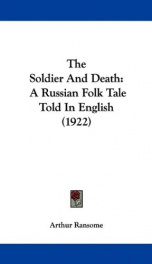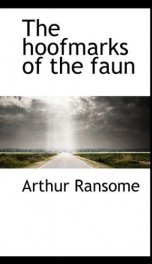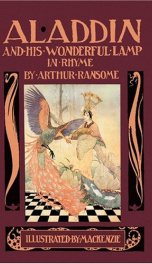Ransome Arthur

Arthur Mitchell Ransome (18 January 1884 - 3 June 1967) was an English author and journalist, best known for writing the Swallows and Amazons series of children's books. These tell of school-holiday adventures of children, mostly in the Lake District and the Norfolk Broads. Many of the books involve sailing; other common subjects include fishing and camping. The books remain so popular that they provide a basis of a tourist industry around Windermere and Coniston Water — the two lakes that Ransome used as the basis for his fictional North Country lake. He also wrote about the literary life of London, and about life in Russia before, during, and after the revolutions of 1917. Some years after his death, it came to light that he had worked as a spy while working as a journalist in Russia. Ransome was born in Leeds[1]; the house, in the Hyde Park area, has a blue plaque over the door commemorating the event. His father was professor of history. His death in 1897 had a lasting effect on Ransome. Ransome received his formal education first in Windermere and then at Rugby School (where he lived in Lewis Carroll's study room) but did not entirely enjoy the experience - due to his poor vision, lack of athletic skill, and limited academic achievement. He attended Yorkshire College, his father's college, for a year, studying chemistry. However, he abandoned the college and went to London to become a writer. He took low-paying jobs as an office assistant in a publishing company and as editor of a failing magazine, Temple Bar Magazine, while writing and becoming a member of the literary scene of London. In his first important book, Bohemia in London (1907), Ransome introduced the history of London's bohemian literary and artistic communities and some of its current representatives. A curiosity in 1903 about a visiting Japanese poet, Yone Noguchi, led to an ongoing friendship with Japanese painter (and Chelsea neighbour) Yoshio Markino, who in turn introduced him to the bohemian circle of Pamela Colman Smith. Ransome married Ivy Constance Walker in 1909 and they had one daughter, Tabitha. It was not a happy marriage and they divorced in 1924. Among his other books, one on Oscar Wilde embroiled him in a libel suit with Lord Alfred Douglas. The alleged libel dealt with Wilde and Douglas' homosexual affair and as a result became very scandalous. Ransome's wife's behaviour in attending the trial, and apparently enjoying the notoriety, added to the stress on their marriage. Ransome won the suit, but suppressed the contentious text from subsequent editions of the Wilde biography. In 1913, he left his wife and daughter and went to Russia to study its folklore. In 1916, Ransome published Old Peter's Russian Tales, a collection of 21 folktales from Russia. After the start of World War I in 1914, he became a foreign correspondent and covered the war on the Eastern Front for a radical newspaper, the Daily News. He also covered the Russian revolutions of 1917, developed some sympathy for the Bolshevik cause and became personally close to a number of its leaders, including Vladimir Lenin and Leon Trotsky. He met the woman who would become his second wife, Evgenia Petrovna Shelepina, who at that time worked as Trotsky's personal secretary.[3] Ransome provided some information to British officials and the British Secret Intelligence Service (MI6), which considered him loyal, if not an agent; he was given the code name S76 in their files. MI5, the British Security Service, kept watch on him because of his opposition to the Allied intervention against the Russian Revolution. On one of his visits to the United Kingdom, the authorities searched and interviewed him and threatened him with arrest. In October 1919, as Ransome was returning to Moscow on behalf of The Manchester Guardian, the Estonian foreign minister Ants Piip entrusted him to deliver a secret armistice proposal to the Bolsheviks. At that time the Estonians were fighting the their War of Independence alongside the White movement of counter-revolutionary forces. After crossing the battle lines on foot, Ransome passed the message, which to preserve secrecy had not been written down and depended for its authority only on the high personal regard in which he was held in both countries, to diplomat Maxim Litvinov in Moscow. To deliver the reply, which accepted Piip's conditions for peace, Ransome had to return by the same risky means, but this time he had Evgenia with him. Estonia withdrew from the conflict and Ransome and Evgenia set up home together in the capital Reval (Tallinn).[4] The Russian period in Ransome's life is depicted in fictional form in Marcus Sedgwick's Blood Red, Snow White. After the Allied intervention Ransome remained in the Baltic states and built a cruising yacht, Racundra. He wrote a successful book about his experiences, Racundra's First Cruise. He joined the staff of the The Guardian when he returned to Russia and the Baltic states. Following his divorce, he married Evgenia and brought her to live in England, where he continued writing for The Guardian, often on foreign affairs, and also writing the "Country Diary" column on fishing. By 1937, MI5 appeared satisfied of Ransome's loyalty to Britain. However, evidence uncovered in the KGB files following the break-up of the Soviet Union seems to indicate that Evgenia Ransome, at least, was involved in smuggling diamonds from the Soviet Union to Paris to help fund the Comintern.[5] The topic is discussed in a 2009 book by Roland Chambers, The Last Englishman: the Double Life of Arthur Ransome.[6] Main article: Swallows and Amazons series Ransome settled in the Lake District. He decided not to accept a position as a full-time foreign correspondent with the Guardian and instead wrote Swallows and Amazons in 1929 - the first of the series that made his reputation as one of the best English writers of children's books. Ransome apparently based the Walker children (the "Swallows") in the book in part on the Altounyan family: he had a long-standing friendship with the mother and Collingwood grandparents of the Altounyans. Later he denied the connection, claiming he only gave the Altounyans' names to his own characters; it appears to have upset him that people did not regard the characters as original creations. Ransome's writing is noted for his detailed descriptions of activities. Although he used many actual features from the Lake District landscape, he invented his own geography, mixing descriptions of different places to create his own juxtapositions. His move to East Anglia brought forth a change of location for four of the books and Ransome started using the real landscape and geography of East Anglia so that it is possible to use the maps printed in the books as a guide to the real area. Ransome's own interest in sailing and need to provide an accurate description caused him to undertake a voyage across the North Sea to Flushing. His book We Didn't Mean To Go To Sea reflects this, and he based the fictional "Goblin" on his own boat Nancy Blackett (which in turn took its name from a character in the series). Two (or possibly three) of the "Swallows and Amazons" books have less realistic plots. The original concept of Peter Duck was a story made up by the children themselves, but Ransome dropped the introductory passage explaining this from the book before it was published (though Peter Duck himself features in Swallowdale as a character whom the children created). Peter Duck is a relatively straightforward story, but with a much more fantastic plot than the more conventional "Swallows and Amazons" books. A trip to China as a foreign correspondent provided Ransome with the imaginative springboard for Missee Lee, a story in which readers find the Swallows and the Amazons sailing around the world in the schooner Wild Cat from Peter Duck. Together with Captain Flint (the Amazons' uncle Jim Turner), they become the captives of Chinese pirates. More controversy attaches to the final book of the series, Great Northern?, set in Scotland. The plot and action appear realistic, but the internal chronology does not fit the usual run of school holiday adventures. Myles North, an admirer of Ransome, provided much of the basic plot of the book. The Autobiography of Arthur Ransome, edited by Rupert Hart-Davis was published posthumously in 1976. It only covers his life up to the publication of Peter Duck in 1931. "Swallows and Amazons" was so popular that it inspired a number of other authors to write in a similar vein: most notably two schoolchildren, Pamela Whitlock and Katharine Hull wrote The Far-Distant Oxus, an adventure story set on Exmoor. Whitlock sent the manuscript to Ransome in March 1937; he convinced his publisher Jonathan Cape to produce it, characterising it as "the best children's book of 1937".[7] Ransome has been honoured in many countries. Durham University awarded him an honorary Doctor of Letters. He was the first winner of the prestigious Carnegie Medal for children's literature, for Pigeon Post in 1936. Translations of his books have appeared in a number of languages. As a result, Ransome became popular in countries such as Japan and Czechoslovakia (now the Czech Republic), where thriving appreciation societies exist. The Arthur Ransome Club was founded in Japan in 1987, and three years later The Arthur Ransome Society, which now has a worldwide membership, was founded in the United Kingdom in 1990. Czech astronomer Antonín Mrkos named an asteroid after the author (6440 Ransome). Ransome and his wife Evgenia lie buried in the churchyard of St Paul's Church, Rusland, in the southern Lake District. Swallows and Amazons · Swallowdale · Peter Duck · Winter Holiday · Coot Club · Pigeon Post · We Didn't Mean to Go to Sea · Secret Water · The Big Six · Missee Lee · The Picts and the Martyrs · Great Northern? · Coots in the North Characters · Places · Boats
do you like this author?
What readers are saying
What do you think? Write your own comment on this book!
write a commentWhat readers are saying
What do you think? Write your own comment on this author!
write a commentBook list
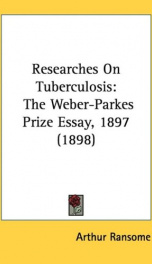
researches on tuberculosis the weber parkes prize essay
Series:
Unknown
Year:
Unknown
Raiting:
4/5
Show more
add to favoritesadd In favorites
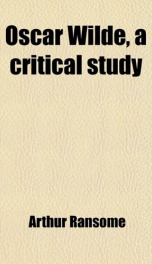
oscar wilde a critical study
Series:
Unknown
Year:
Unknown
Raiting:
4/5
Purchase of this book includes free trial access to www.million-books.com where you can read more than a million books for free. This is an OCR edition with typos. Excerpt from book: Ill POEMS It is a relief to turn from a list of bibliographical and biographical dates to the Mayday colouring of a young man's first book; to forget for a moment the suffering that is nearly twenty years ahead, and to think of " undergraduate days at Oxford ; days of lyrical ardour and of studious sonnet-writing; days when one loved the exquisite intricacy and musical repetitions of the ballade, and the villanelle with its linked long-drawn echoes and its curious completeness; days when one solemnly sought to discover the proper temper in which a triolet should be written ; delightful days, in which, I am glad to say, there was far more rhyme than reason." It is too easy to forget this note in Wilde's personality, that he sounded again and again, and that was not cracked even by the terrible experiences whose symbol was imprisonment. To the end of his life Wilde retained the enthusiasm, the power !i,of self-abandon to a moment of emotion, the .delight in difficult beauty, in accomplished love- v liness, that made his Oxford years so happya memory, and give his first book a savour quite independent of its poetical value. Ballade and villanelle, rondeau and triplet, - the names of these French forms were enough to set the key for a young craftsman's reverie. But the university at that time was full of lively influences. Walter Pater's " Renaissance " had not long left the press. Its author, that grave man, was to be met in his panelled rooms, ready to advise, to point the way to rare books, and to talk of the secrets of his art. Pater in those days was a new classic, the private possession of those young men who found his books " the holy writ of beauty." The new classics of the generation beforeTennyson and Arnold and Browninghad not yet faded into that false antiquity ...
Show more
add to favoritesadd In favorites

legends of the worshipful company of plaisterers
Series:
Unknown
Year:
Unknown
Raiting:
4/5
Show more
add to favoritesadd In favorites

edgar allan poe a critical study
Series:
Unknown
Year:
Unknown
Raiting:
4/5
An effort to trace Poe's thought by discussing in the most convenient order his various activities or groups of ideas. The author endeavors to strike a balance between Poe's practice and his theory.
Show more
add to favoritesadd In favorites
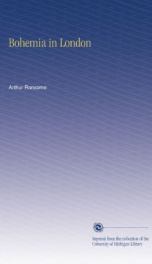
bohemia in london
Series:
Unknown
Year:
Unknown
Raiting:
5/5
This volume is produced from digital images created through the University of Michigan University Library's preservation reformatting program. The Library seeks to preserve the intellectual content of items in a manner that facilitates and promotes a variety of uses. The digital reformatting process results in an electronic version of the text that can both be accessed online and used to create new print copies. This book and thousands of others can be found in the digital collections of the University of Michigan Library. The University Library also understands and values the utility of print, and makes reprints available through its Scholarly Publishing Office.
Show more
add to favoritesadd In favorites

Russia in 1919
Series:
Unknown
Year:
Unknown
Raiting:
3/5
This book describes the economic, social and political situation Arthur Ransome saw during his visit to Russia in February and March of 1919. Underlining the description of these events is the wrenching famine in Russia caused by the Civil War. In this work Ransome interviews several prominent members of the Soviet government as well as ordinary citizens of Soviet Russia. While Ransome's support of the Soviet society is evident in his critical but encouraging look at this new government struggling through a civil war.
Show more
add to favoritesadd In favorites
What readers are saying
What do you think? Write your own comment on this author!
write a commentif you like Ransome Arthur try:
readers also enjoyed
What readers are saying
What do you think? Write your own comment on this author!
write a commentGenre
if you like Ransome Arthur try:
readers also enjoyed
Do you want to read a book that interests you? It’s EASY!
Create an account and send a request for reading to other users on the Webpage of the book!
